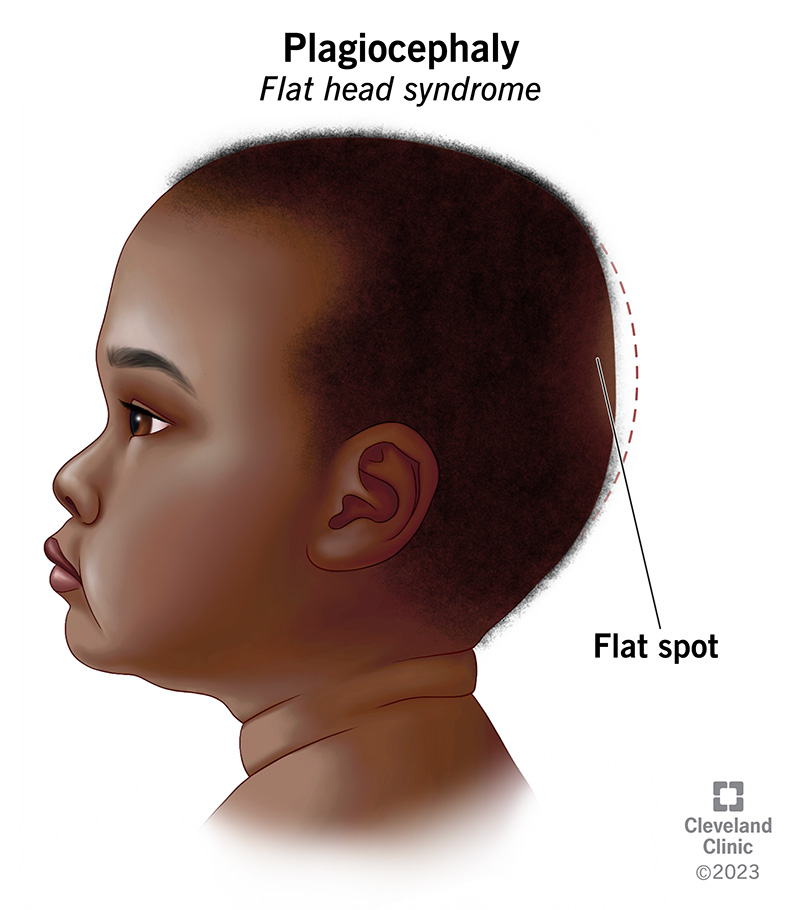Baby Flat Head: A Comprehensive Guide for Parents
Introduction
A baby’s head is soft and malleable, which allows it to mold and fit through the birth canal during delivery. However, this softness also makes it susceptible to flattening, a condition known as plagiocephaly or brachycephaly. While baby flat head is a common concern among parents, it is important to understand its causes, symptoms, and treatment options to ensure the best possible outcome for your child.
Causes of Baby Flat Head
There are several factors that can contribute to the development of baby flat head:
- Positioning: Babies who spend excessive time lying on their backs, such as in car seats, swings, or cribs, are at an increased risk of developing a flat head. This is because the constant pressure on the back of the head can cause the skull to flatten.
- Torticollis: Torticollis is a condition that causes the neck muscles to tighten on one side, leading to a tilted head and uneven pressure on the skull. This can result in a flat head on the side of the head that is tilted down.
- Premature birth: Premature babies have softer skulls and weaker neck muscles, making them more susceptible to flat head.
- Multiple births: Babies born in multiple births, such as twins or triplets, may have less space in the womb, which can increase the risk of flat head.
Symptoms of Baby Flat Head
The most noticeable symptom of baby flat head is a flattened area on the back or side of the head. Other symptoms may include:
- A head that is asymmetrical or uneven
- A forehead that is prominent on one side
- Ears that are not aligned
- Difficulty turning the head to one side
Diagnosis of Baby Flat Head
Baby flat head is typically diagnosed through a physical examination by a healthcare professional. The doctor will assess the shape of the head, check for any underlying conditions such as torticollis, and take measurements to determine the severity of the flattening.
Treatment Options for Baby Flat Head
The treatment for baby flat head depends on the severity of the condition and the age of the child. Treatment options may include:
- Repositioning: This involves changing the baby’s position frequently to reduce pressure on the flattened area. Parents can use pillows, rolled-up towels, or other supports to help keep the baby’s head in a more rounded shape.
- Physical therapy: A physical therapist can help stretch the tight neck muscles in babies with torticollis, which can improve head alignment and reduce flattening.
- Helmet therapy: In severe cases, a custom-made helmet may be prescribed to help reshape the skull. The helmet is worn for several hours each day and gradually corrects the flattening over time.
Prevention of Baby Flat Head
There are several things parents can do to help prevent baby flat head:
- Alternate head positions: Avoid keeping the baby on their back for extended periods. Alternate between tummy time, side-lying, and back-lying positions.
- Encourage head movement: Encourage the baby to turn their head to both sides by placing toys or objects of interest within their reach.
- Avoid prolonged use of car seats and swings: Limit the time the baby spends in car seats and swings, as these can restrict head movement.
- Check for torticollis: If you notice that your baby has a preference for turning their head to one side, consult a healthcare professional to rule out torticollis.
Prognosis for Baby Flat Head
Most cases of baby flat head resolve on their own as the child grows and their skull becomes stronger. However, early intervention is important to prevent severe flattening and potential developmental issues. With proper treatment, most babies with flat head will have a normal head shape and no long-term complications.
When to Seek Medical Attention
If you are concerned about your baby’s head shape, it is important to seek medical attention promptly. Early diagnosis and treatment can significantly improve the outcome. Consult a healthcare professional if you notice any of the following:
- A severe flattening of the head
- Asymmetry or unevenness of the head
- Difficulty turning the head to one side
- Persistent torticollis
Conclusion
Baby flat head is a common condition that can be caused by various factors. While it is usually not a serious medical concern, early diagnosis and treatment are essential to prevent severe flattening and potential developmental issues. By following preventive measures, such as alternating head positions and encouraging head movement, parents can help reduce the risk of baby flat head and ensure the best possible outcome for their child.

